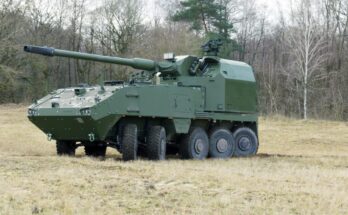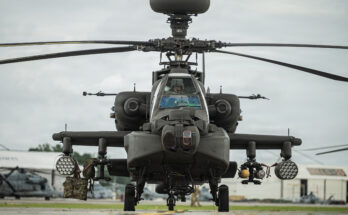U.S. House appropriators are ready to sign off on the Air Force’s request for eight new Boeing F-15EX fighters to begin replacing older F-15C/D aircraft in the Air National Guard. The requirement for new F-15s was a recent development, and appeared to germinate outside of Air Force leadership. The Air Force previously stated that it would only buy fifth-generation aircraft like the F-35, but service officials are now arguing that buying new F-15s is the cheapest and easiest way to replace the legacy aircraft that are starting to age out. However, the Air Force has also reduced near-term F-35A procurement rates, which has unsettled lawmakers.
A draft version of the House’s FY20 defense appropriations bill maintains the $985.5 million requested by the Air Force for the first eight F-15s, but also adds 12 F-35As, for a total of 60 F-35As.

“The Committee notes that this recommendation procures more than seven ‘fifth generation’ fighters for every single new ‘fourth generation’ fighter,” lawmakers wrote in a report accompanying the draft bill.” The committee recommends this as a reasonable balance between advanced capability and near-term capacity concerns. In other words, the committee concedes the need for buying fourth-gen F-15s, but stresses that the balance of fighter jet procurement should be heavily weighted toward fifth-gen F-35s.
The addition of 12 F-35s may alleviate apprehension lawmakers had about reducing F-35 procurement rates, but the move also raises cost concerns. The Air Force wants to buy 18 F-15s per year between FY21 and FY24 at an average annual cost of $1.7 billion. If Congress also continues to bolster F-35A procurement beyond the current rate of 48 per year, then the service’s aircraft procurement funding topline will surge even higher. It is possible other areas of the budget could be tightened in order to accommodate the increased fighter procurement rates. The Air Force has said it has a goal of buying 72 fighters per year to bolster the force structure.
Shaun's deep-rooted interest in military equipment continues in his role as a senior defense analyst with a focus on the United States. He played an integral role in the development of Forecast International's U.S. Defense Budget Forecast, an interactive online product that tracks Pentagon acquisition programs throughout the congressional budget process. As editor of International Military Markets – North America, Shaun has cultivated a deep understanding of the vast defense markets in the United States and Canada. He is a regular contributor to Forecast International's Defense & Security Monitor blog and has co-authored white papers on global defense spending and various military programs.




